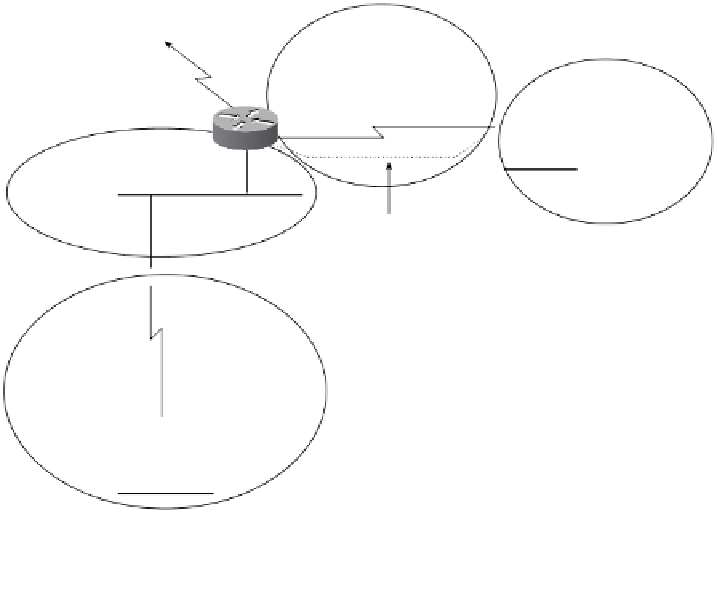Information Technology Reference
In-Depth Information
The ASBR uses the
summary-address
command to summarize redistributed routes. For
example, if networks 200.100.0.0/24 through 200.100.255.0/24 are redistributed into OSPF
at the same ASBR, you can configure the ASBR with the following command:
summary-address 200.100.0.0 255.255.0.0
The external LSA includes the summary address of 200.100.0.0 rather than each individual
network number, 200.100.0.0, 200.100.1.0, 200.100.2.0, and so on.
The following section shows a summarization example.
OSPF Configuration
This section covers the configuration of OSPF routers and the commands that you use to verify
OSPF routes.
Use Figure 8-6 as a reference, where four routers are configured to run OSPF using area 0 and
three other areas. Area 10 is configured to do authentication and has a Frame Relay link. Area 30
is connected to area 0 through a virtual link. Area 20 is a transit area with a p2p link. Router 3
is configured with a higher priority so that it is elected as the DR for the Ethernet segment. The
interface IP addresses and OSPF area numbers are shown in Figure 8-6.
OSPF Configuration Diagram
Figure 8-6
Area 20
transit area
Static 10.0.0.0/24
Router 9
loop0: 192.16.100.2/32
e0: 192.16.100.18/28
s0: 192.16.100.241/30
Area 30
Router 9
Router 10
s0
s0
e0
e0
Area 0
Virtual Link
Router 10
loop0: 192.16.100.3/32
e0: 192.16.100.33/28
s0: 192.16.100.242/30
e0
Router 3
loop0: 192.16.100.4/32
e0: 192.16.100.19/28
s0.1: 192.16.100.245/30
Router 3
s0.1
Area 10
authentication
enabled
Frame
Relay
s0.1
Router 7
e0
Router 7
loop0: 192.16.100.5/32
e0: 192.16.100.129/27
s0.1: 192.16.100.246/30

















Search WWH ::

Custom Search